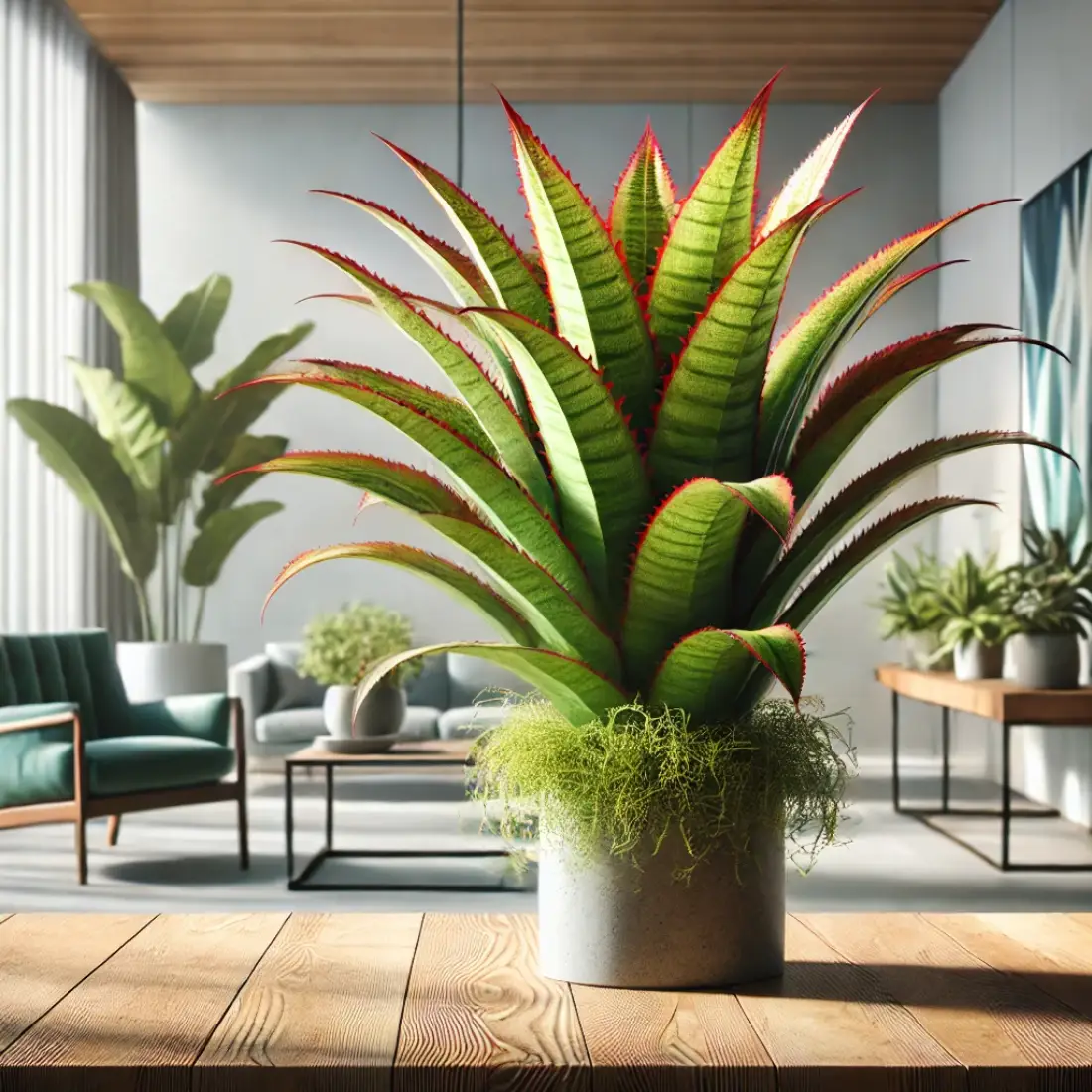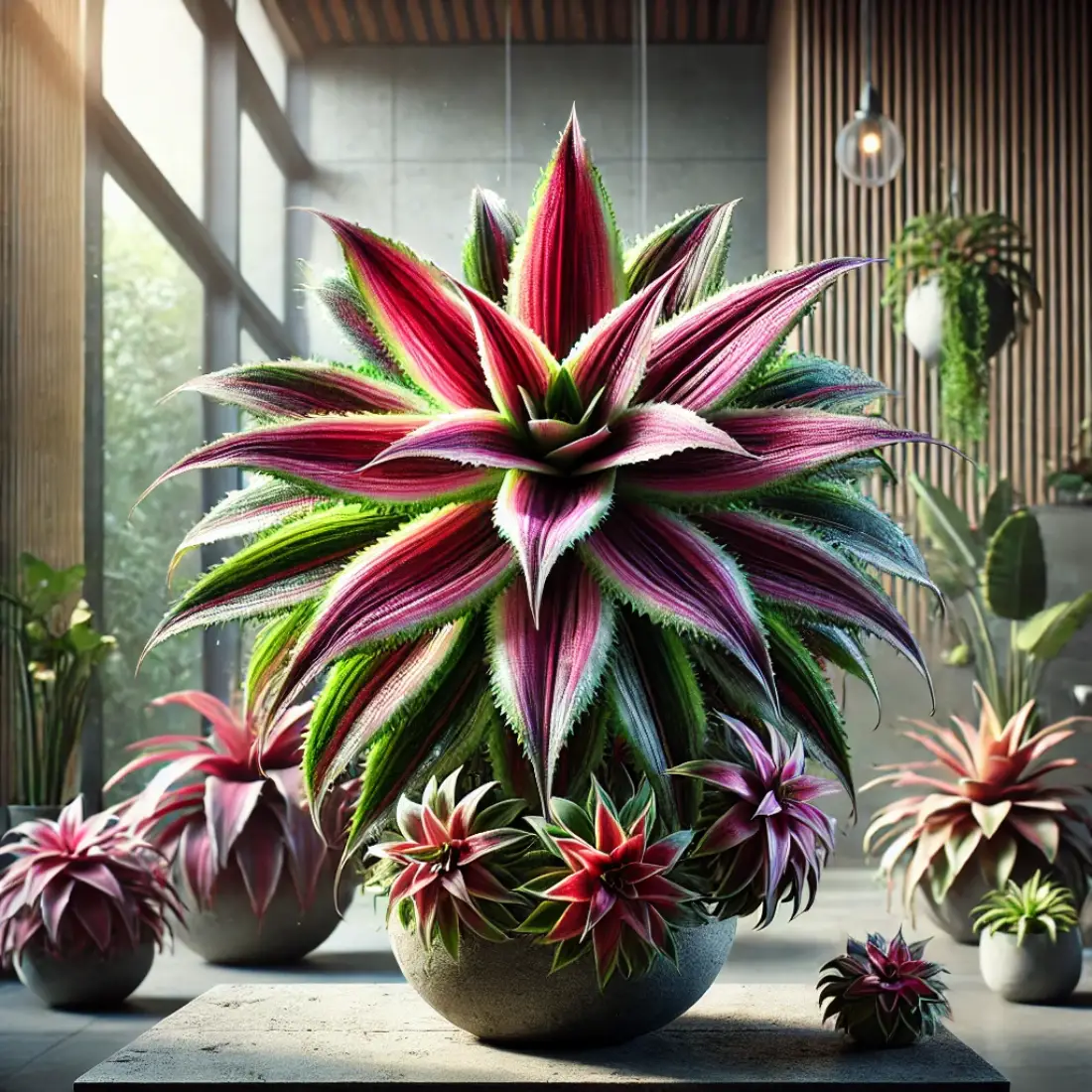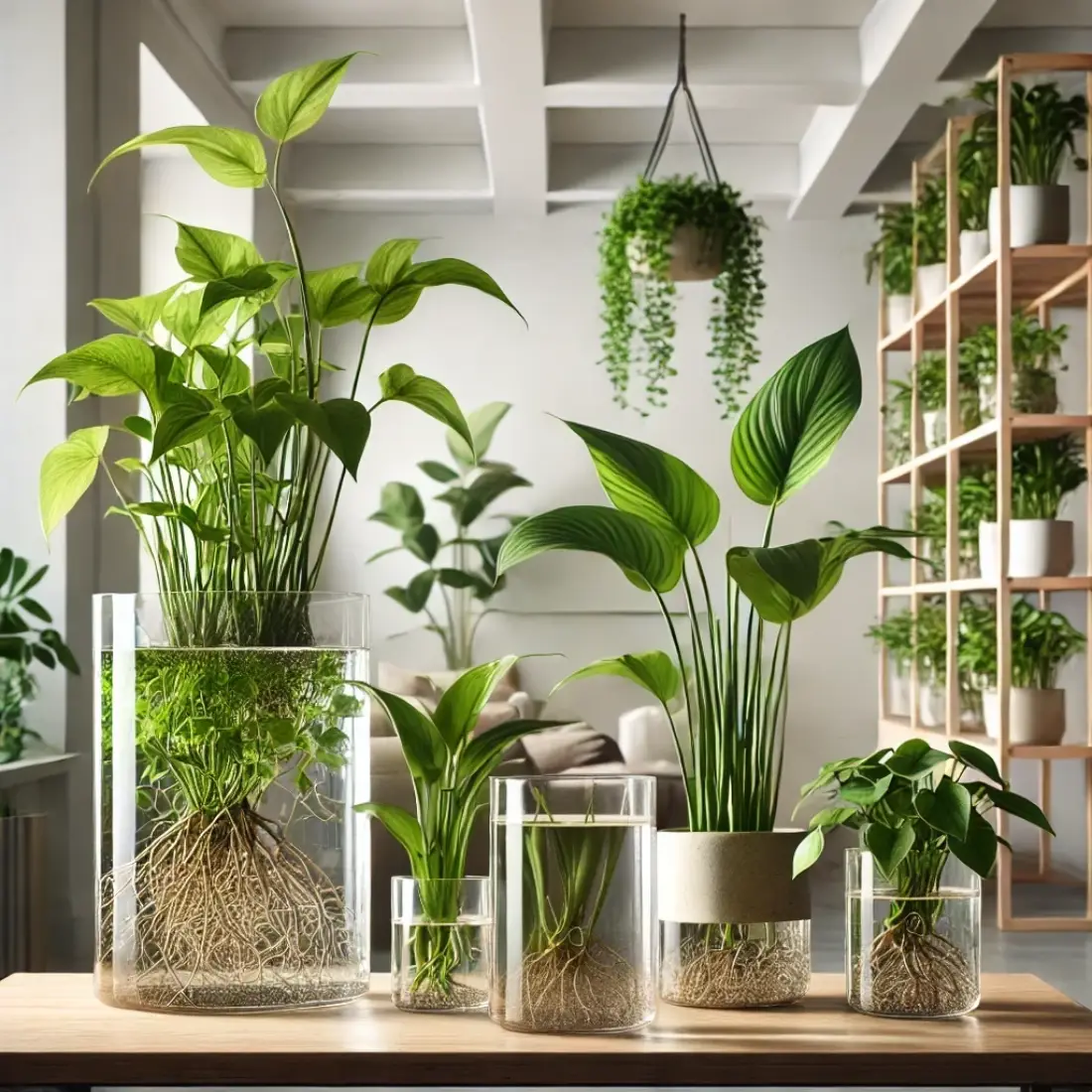Cryptanthus, commonly known as Earth Star, is a striking and low-maintenance houseplant that has gained popularity among indoor plant enthusiasts. Named for its star-shaped rosette of leaves, Cryptanthus adds a unique touch to any indoor plant collection. Native to the tropical regions of Brazil, this bromeliad is admired not only for its attractive foliage but also for its ease of care.
- Cryptanthus, also known as Earth Star, is a low-maintenance, attractive houseplant.
- Requires specific light, water, and soil conditions to thrive.
- Propagation is straightforward, often through offsets.
Choosing the Right Cryptanthus Variety
When selecting a Cryptanthus variety, it’s essential to consider the plant’s appearance, growth habits, and care requirements. Cryptanthus varieties come in a range of colors and patterns, making it easy to find one that suits your aesthetic preferences and fits well within your indoor garden.
Popular Cryptanthus Varieties
Cryptanthus Bivittatus (Pink Star): Features pink to red leaves with white stripes. Compact size, making it perfect for small spaces.

Cryptanthus Bromelioides: Known for its vibrant green leaves with reddish edges. Grows slightly larger than other varieties, adding a bold touch to your plant collection.

Cryptanthus Zonatus (Zebra Plant): Exhibits striking zebra-like stripes on its leaves. Requires bright, indirect light to maintain its vivid patterns.

Cryptanthus Fosterianus: Has dark green leaves with silver banding. Its wavy leaf edges create a unique, textured look.

Factors to Consider When Choosing
Light Conditions: Some varieties thrive in bright, indirect light, while others can tolerate lower light levels. Choose a variety that matches the light conditions in your home.
Space Availability: Consider the mature size of the Cryptanthus variety. Some are more compact, suitable for tight spaces, while others need more room to spread.
Color and Pattern Preferences: Cryptanthus plants offer a wide range of colors and patterns. Select a variety that complements your interior decor and personal style.
Care Level: While all Cryptanthus are relatively low-maintenance, some may require slightly different care. Research the specific needs of your chosen variety to ensure it thrives.
Optimal Growing Conditions
Light Requirements for Cryptanthus
Cryptanthus, or Earth Star, thrives in bright, indirect light. Direct sunlight can scorch the leaves, while too little light can cause the colors to fade and the plant to grow leggy. Place your Cryptanthus near an east or west-facing window, where it can receive filtered sunlight.
Soil and Potting
Cryptanthus prefers a well-draining soil mix. A blend of orchid bark, peat, and perlite is ideal, as it ensures proper drainage and aeration. When potting your Cryptanthus, choose a shallow pot with drainage holes to prevent water from accumulating at the roots.
Watering Cryptanthus
Water your Cryptanthus regularly, keeping the soil consistently moist but not waterlogged. Allow the top inch of soil to dry out between waterings. Overwatering can lead to root rot, while under watering may cause the leaves to curl and become dry. Mist the plant occasionally to maintain humidity.
Temperature and Humidity
Cryptanthus thrives in temperatures between 60-85°F (15-29°C). It prefers a humid environment, similar to its native tropical habitat. Use a humidifier or place the pot on a tray filled with pebbles and water to increase humidity levels around the plant.
Fertilizing Cryptanthus
For an organic approach, use compost tea or a diluted fish emulsion to feed your Cryptanthus monthly during the growing season. These natural fertilizers provide essential nutrients without the risk of chemical buildup, promoting healthy growth and vibrant foliage.
Propagating Cryptanthus
Propagating Cryptanthus, or Earth Star, is a straightforward process that can be highly rewarding. The most common method is by offsets, also known as pups, which are small plants that grow around the base of the parent plant.
Propagation by Offsets
Look for small plantlets emerging from the base of the parent plant. These offsets typically develop when the parent plant is mature and healthy.
Steps to Successfully Propagate:
- Remove the Offset: Gently pull or cut the offset away from the parent plant. Ensure it has a few roots attached.
- Prepare the Potting Mix: Use a well-draining soil mix similar to that used for the parent plant.
- Plant the Offset: Plant the offset in a small pot, burying the roots and securing the plant upright.
- Water and Care: Water the newly planted offset lightly and place it in a warm, humid environment with bright, indirect light.
Caring for New Plants
- Keep the soil consistently moist but not waterlogged.
- Maintain high humidity by misting the plant or using a humidity tray.
- Avoid direct sunlight to prevent leaf burn.
Common Issues and Solutions:
Wilting or Drooping: Ensure the soil remains moist and the plant is not exposed to direct sunlight.
Slow Growth: Check for proper light conditions and consider using a diluted organic fertilizer.
FAQs About Growing Cryptanthus
How often should I water my Cryptanthus?
Water your Cryptanthus when the top inch of soil feels dry to the touch. In general, this means watering about once a week, but it can vary depending on your home’s humidity and temperature. During the growing season (spring and summer), you may need to water more frequently, while in the fall and winter, reduce the watering frequency.
Can Cryptanthus grow in low light conditions?
Cryptanthus can tolerate lower light conditions, but it thrives best in bright, indirect light. In low light, the plant may lose some of its vibrant color and grow more slowly. If you notice the colors fading or the plant becoming leggy, try moving it to a brighter location.
What is the best soil mix for Cryptanthus?
Cryptanthus prefers a well-draining soil mix. A combination of orchid bark, peat, and perlite works well, providing the necessary drainage and aeration. Avoid heavy, water-retentive soils, as they can lead to root rot.
How do I propagate Cryptanthus?
Propagating Cryptanthus is typically done through offsets (pups). Gently remove the offsets from the base of the parent plant, ensuring they have some roots attached. Plant the offsets in a well-draining soil mix, water lightly, and keep in a warm, humid environment with bright, indirect light until established.
What are common pests that affect Cryptanthus?
Common pests that can affect Cryptanthus include mealybugs, spider mites, scale insects, and aphids. Regularly inspect your plant for signs of these pests, such as cotton-like masses (mealybugs), fine webs (spider mites), hard shell-like bumps (scale), or clusters of small insects (aphids). Treat infestations promptly with insecticidal soap, neem oil, or rubbing alcohol.
How can I increase humidity for my Cryptanthus?
To increase humidity for your Cryptanthus, you can mist the plant regularly, place it on a tray filled with pebbles and water, or use a humidifier. Keeping the plant in a bathroom or kitchen where humidity is naturally higher can also help.
Why are the leaves of my Cryptanthus curling?
Leaf curling in Cryptanthus can be caused by several factors, including underwatering, low humidity, or exposure to cold drafts. Ensure the plant is receiving adequate water, maintain high humidity levels, and keep it away from drafts or sudden temperature changes.
Can I grow Cryptanthus outdoors?
Cryptanthus can be grown outdoors in tropical or subtropical climates where temperatures do not drop below 60°F (15°C). Ensure the plant is in a shaded or partially shaded area to prevent leaf burn from direct sunlight. In colder climates, Cryptanthus should be grown indoors to protect it from frost and cold temperatures.









